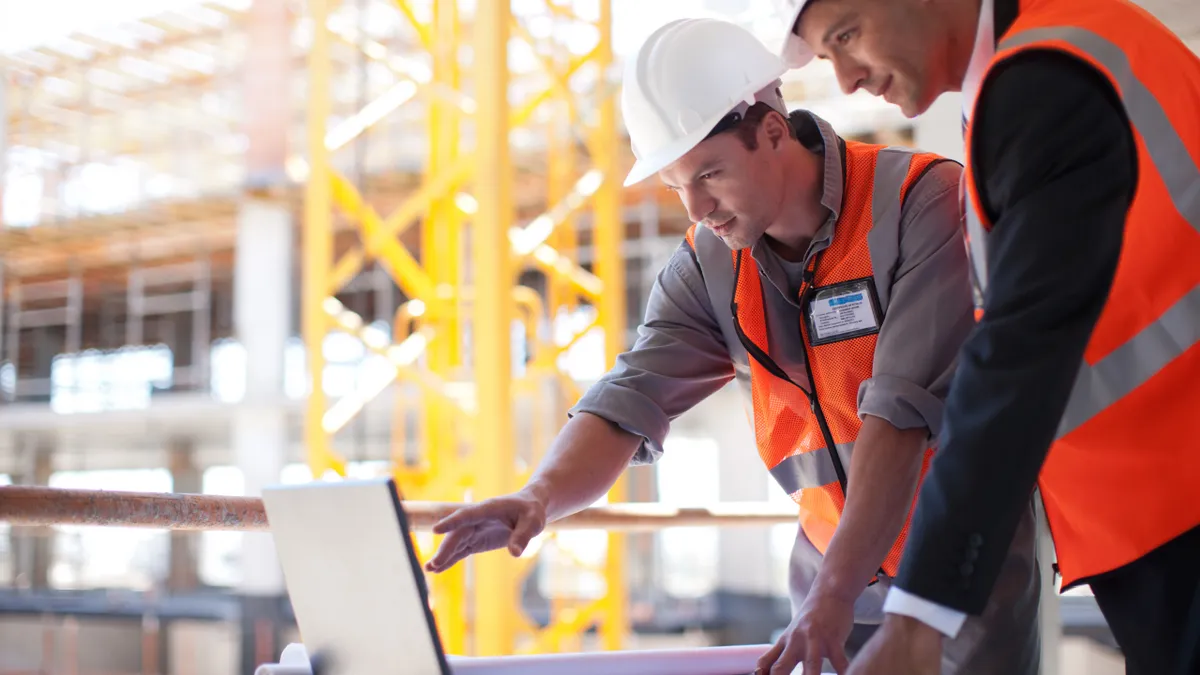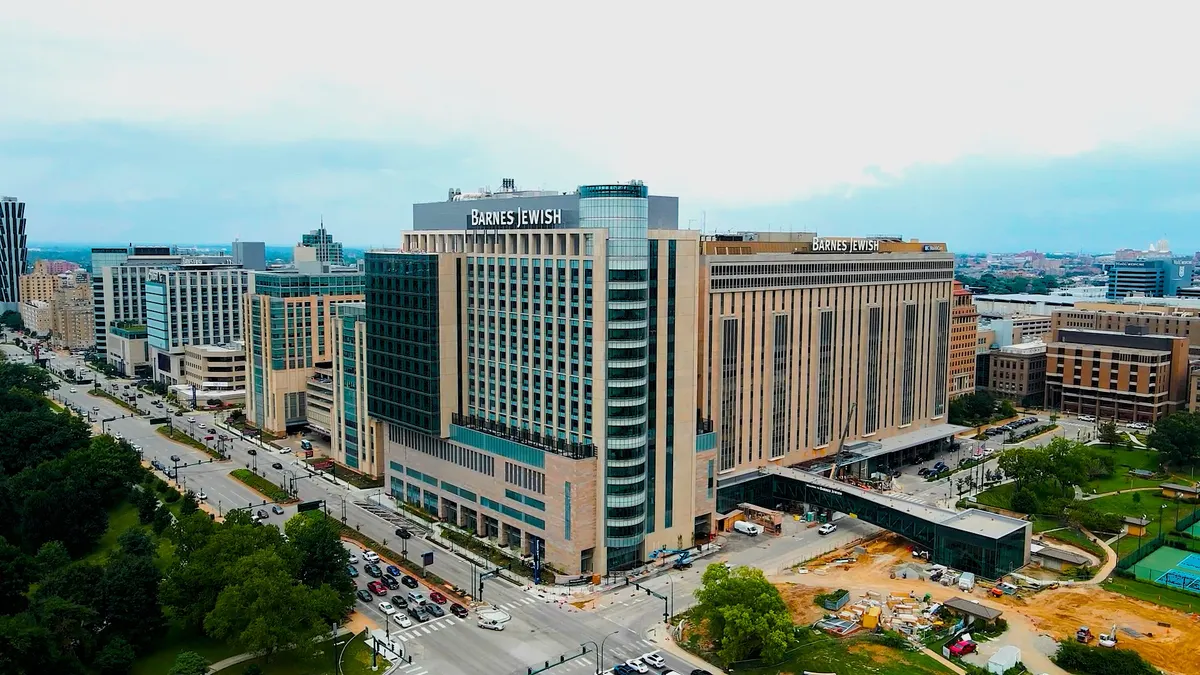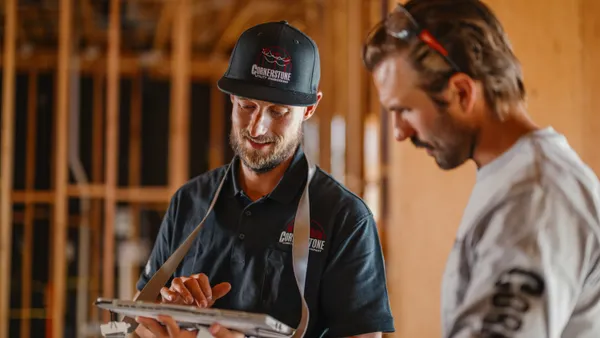This feature is part of a series that takes an in-depth look at drones in construction. To view other posts in the series, check out the spotlight page.
August 29 was a great day."
That sentiment may have been voiced by Suzanne El-Moursi, president of Chicago–based Uplift Data Partners, but it is shared by drone service providers and construction companies across the U.S.
On Aug. 29, 2016, the Federal Aviation Administration’s first small commercial drone rules (unveiled in June 2016 as Part 107 of the Federal Aviation Regulations) went into effect, altering the cumbersome process that required companies to apply for an exemption to use unmanned aerial vehicles for any commercial purpose.
The construction industry was one of the primary voices and factors involved with the FAA’s decision to set clear guidelines for use, according to Sean Pribyl, an attorney with Blank Rome in Washington, DC, and co-lead for the firm’s unmanned systems group.
When weighing the pros and cons of Part 107, the construction industry should take heart: "The FAA created the rules — in part — with construction in mind," Pribyl said.
With great power comes great responsibility. Once a construction company decides it wants to integrate drones into its operations, it needs to take several steps before taking flight to mitigate risk and ensure the technology is used effectively.
Know the laws
Although Part 107 allows construction companies to implement drones without applying for exemptions for basic uses, there are still strict rules in place for unmanned vehicle flight. If a construction company isn’t informed about these regulations, it can open itself up to myriad penalties and risks.
The FAA rules mandate that drones weigh less than 55 pounds, stay in operators’ line of sight, be flown only above people directly involved with the operation and be used only during daylight hours, among other restrictions. The drone must also be registered and its pilot certified through a knowledge test.
Companies can apply for an exemption to these rules, but without that waiver, they can face steep civil penalties and fines if they are found in violation, Pribyl said. Firms must also stay current on future changes to commercial drone rules, as the FAA is expected to release additional allowances and modify the regulations in the coming years.
Location is a key consideration for construction and real estate applications of UAVs. Utilizing drones in a remote location, such as a solar farm or large infrastructure project, would likely be less complicated than using UAVs in a densely populated urban area where the company must take into account the potential of flying over people.
The utilization of drones can also become more complicated when state and local regulations are involved. These laws can vary greatly, and companies must ensure they are "complying with the legal and the regulatory requirements through a planning and assessment process to ensure they’re adhering not just to Part 107, but if there are state laws and ordinances, they should be aware [of] what they are," Pribyl said.
Decide who's going to fly the drones
Once a company knows the rules for commercial drone use, it must decide whether to develop an in-house team to run UAV operations or to partner with a third-party provider.
Minneapolis-based Mortenson, for example, chose the third-party route, according to Taylor Cupp, a project solutions technologist for the company. "More often than not, it’s a new-enough technology that our teams aren’t experts in it yet. We rely on the vendor and say, 'Here’s what we want to accomplish,' and they provide a recommendation and the data and output and allow us to accomplish it," he said.
In addition, service providers are experts in the requirements of the states and municipalities in which they operate and can ensure the construction firm is complying with local and state regulations as well. "There are a lot of technicalities around the regulations," Cupp said. "It’s too early for us to scale that across the company, so we’re going to rely on those experts."
El-Moursi added that a third-party provider can assist construction companies through every step of the process, from securing a qualified pilot, to complying with regulations, to choosing hardware and software, and to analyzing the data collected from the UAV.
"The core question, even if you do it all internally, is scaling," she said. "Are you able to roll out drones enterprise-wide? What we find from clients is they could do it across maybe five sites, but they need a partner to roll it out across all 25."
For some companies, building an in-house team to oversee their drone operations is more efficient than using third parties. Adam Gilbertson, general manager of the northern region of RDO Integrated Controls, said small and midsize firms have been quicker to take the in-house tack, as they are "more willing to tolerate risk."
Pribyl said each company and situation is different, and those looking to implement drones must choose for themselves the option that carries the least amount of risk. "Either way, they’re going to have to do their due diligence to ensure the outside contractor or the in-house team meets all the requirements and that they have in place those robust operating procedures," he said.
Secure the proper insurance
The third-party provider or in-house team must then choose from endless drone hardware options, with typical costs ranging from $500 to $5,000 for a single device.
That hardware can become a big investment for a construction company, and obtaining the proper insurance can help manage risk down the line.
Although Part 107 doesn’t require insurance, Pribyl advises construction firms consider liability insurance — in case the drone damages property or harms a person — and hull insurance, which covers damage to the UAV.
"The concern is that the aircraft that may cause damage to property if [the pilot] loses control of the drone," he said. "Then you have potential claims under those [situations]."
Develop company guidelines for drone use
A key step for construction firms looking to integrate drones in their operations is the creation of company-wide training documents and processes for all project stakeholders prior to any drone flight.
Mortenson established a manual outlining best practices and operational guidelines in early 2015, before launching its drone program. "It was back when people really started to show an interest but before the floodgates opened. That way we’d be prepared," Cupp said.
He advises companies to set guidelines for how they want to utilize drones and what data they want to collect from them. "You need a protocol for how you’re using the technology and what you hope to get out of it," he said.
Those guidelines can also serve as a way for people in the company who are launching their first drone flight to avoid common mistakes. "You need to have a good understanding of what you are getting, and more importantly, what the limitations are," Gilbertson said.
A number of hard-to-control factors can hinder an otherwise-successful drone flight, including high winds and inclement weather. "There are some limitations out there to be aware of and plan around," he said.
Be open to change
The drone industry is constantly evolving, and construction companies should be adaptable to changes in regulations, as well as open to possible new uses for the technology.
"You’re seeing companies now that are being approved for beyond-line-of-sight flight, night flight, flight over people — that wasn’t really allowed before," Cupp said. "Some of the federal regulations are becoming more relaxed with how reliable the technology is, so we can do more advanced things."
El-Moursi said she sees drones "as a medium" and as "the next frontier of tech to solve site coordination." The industry is still emerging and has room to grow as more companies take advantage of UAVs and find more sophisticated uses for their capabilities.
"Job sites are so in flux that we leave ourselves questioning how can you really use these to track and support communications on the day-to-day," Cupp said.




















